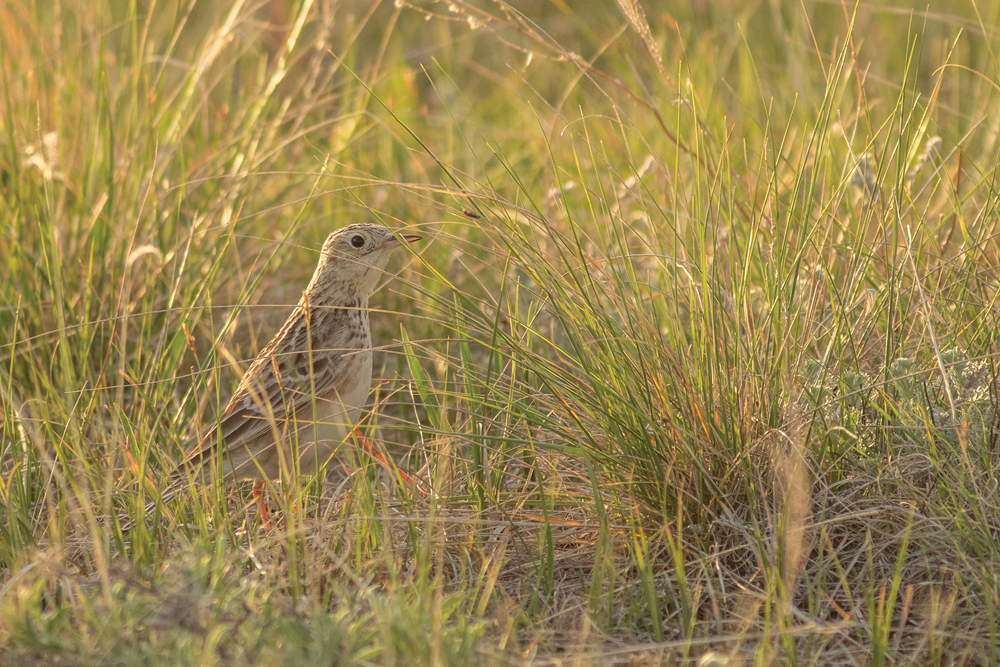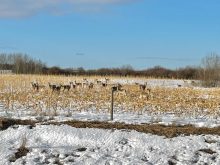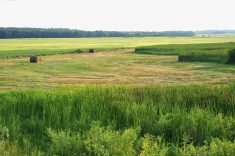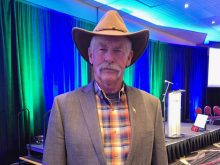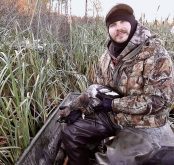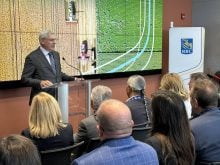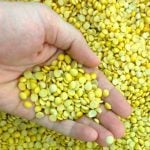A bird survey on operations that use regenerative farm practices has provided information on where different bird species are staking their claims.
The limited study, spearheaded by the Manitoba Forage and Grassland Association, provincial government and Manitoba Important Bird Areas program, counted bird populations on four farms in western Manitoba, all from different sectors.
The lineup included a forage-only cow-calf operation near Shellmouth, a mixed beef operation near Strathclair that grazes cover crops, a dairy operation that grazes perennial forage and annuals near Clanwilliam and a grain farm near Hartney that employs low soil disturbance and reduced fertilizer. The farms with livestock all used rotational grazing.
Read Also

Manitoba farmers uneasy on expropriation
Farmland expropriation for Oak Bluff highway project brings process, farmer compensation concerns back to the fore.
Why it matters: Biodiversity is a benefit commonly touted for regenerative agriculture.
The diversity across each farm showed “an abundance of habitat niches,” creating “islands of biodiversity,” the survey concluded.
The mixed farm with grazed cover crops had the highest number of species detected, although there was “pretty good species richness” on all properties, said provincial species at risk biologist Tim Poole.
The dairy operation took the crown on diversity, a metric that includes the number of species and how many there are of each species.
Poole was unsurprised to find a high number of wetland birds on the mixed farm and cropland. Strathclair has a wealth of prairie potholes for habitat, while the cropland got “inundated” by Franklin gulls.
Grassland birds
In the breakdown of grassland birds, which include some of the Prairies’ most prioritized species at risk, the highest numbers were found on regenerative cropland. It had slightly more than the number found on grazed pasture, which is more typically considered a refuge for bird species.
The results also showed an ebb and flow when grassland bird species were classified between those that need grasslands throughout their life cycle and those that spend only part of their life on grasslands.
Grazed pasture and crops were largely equal in full-time grassland birds, but the cropland was rich in part-timers. Pasture had the fewest part-timers of any production system. The mixed system had the fewest full-time grassland species.
For a species like horned lark, which prefers grassy areas with some bare ground, stubble could have made the cropland attractive, Poole suggested. He added that it would be interesting to compare the survey’s findings with the number of vertebrates in the areas surveyed, which would speak to food availability.
As well as cropland, Poole said horned larks gravitated to bale-fed areas on the cow-calf operation, which he deemed “an interesting result.”
He also noted many birds might be naturally more abundant in the Hartney area, where the grain farm was located.
Findings would ideally have been compared with non-regenerative farmland in the same areas as the survey sites.
Species at risk
Recognized species at risk were seen on the four operations. Marbled godwit was found in the grazed cover crops and grain crop; there were red-headed woodpeckers on the dairy and grazed pasture and barn swallow was noted across all four operations.
Bobolinks were on all livestock operations and horned larks were on every production type except grazed cover crops. Grazed pasture was also the only production type where bank swallows and the globally threatened Sprague’s pipit were found.
“There was sort of this juxtaposition on that grazed site … above the escarpment, you had these sort of sandy soil grasslands which really had these hotspots of Sprague’s pipit,” Poole said.
In the lush river valley below, the species mix changed and bobolinks were prevalent.
“For these regen ag properties, they can potentially provide multitudes of benefits with ecological goods and services, and biodiversity could be precisely one of those benefits,” Poole said.
Limits
The survey is only a snapshot drawn from a very small sample size, Poole admitted.
Since there were conventional farm sites for controls, the study’s takeaways are limited to bird trends within regenerative agriculture. It can’t quantify whether regenerative systems are supportive of bird populations, as champions of the movement often claim.
That’s work for future research, Poole said. His hope for the survey is “for other people to take this forward, for researchers to really dig into this question. I think there really is something there to look at.”


